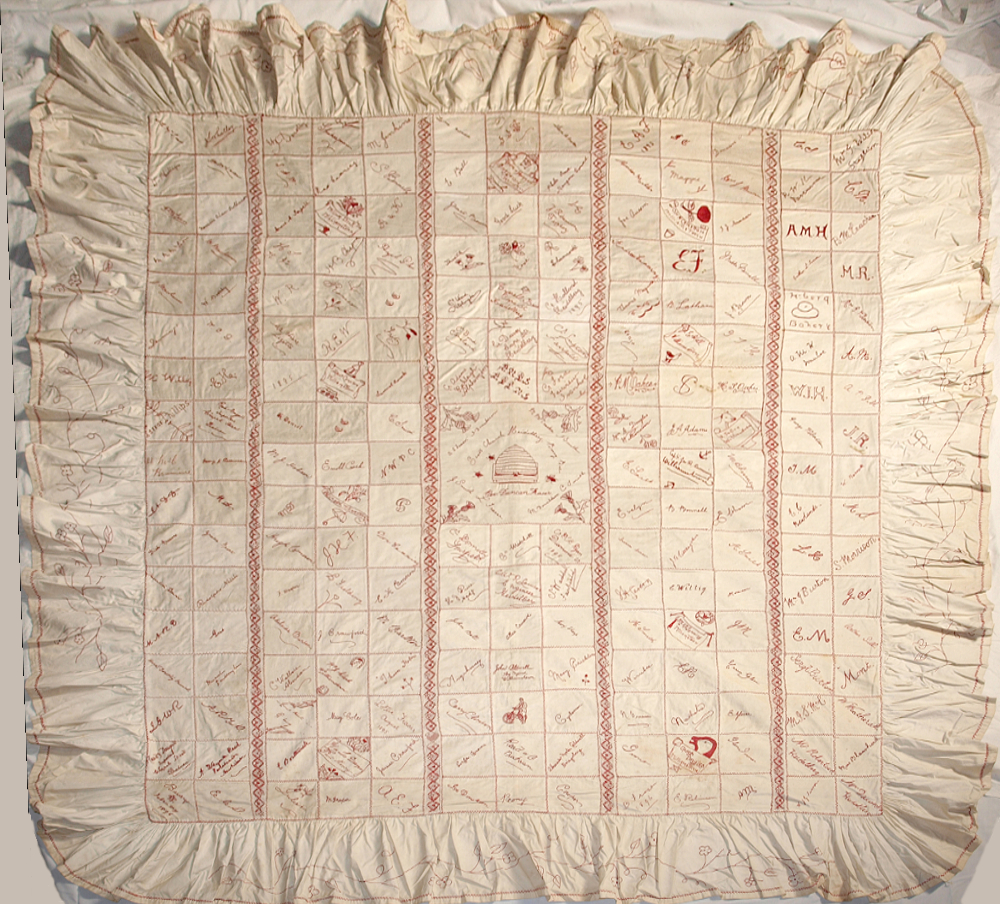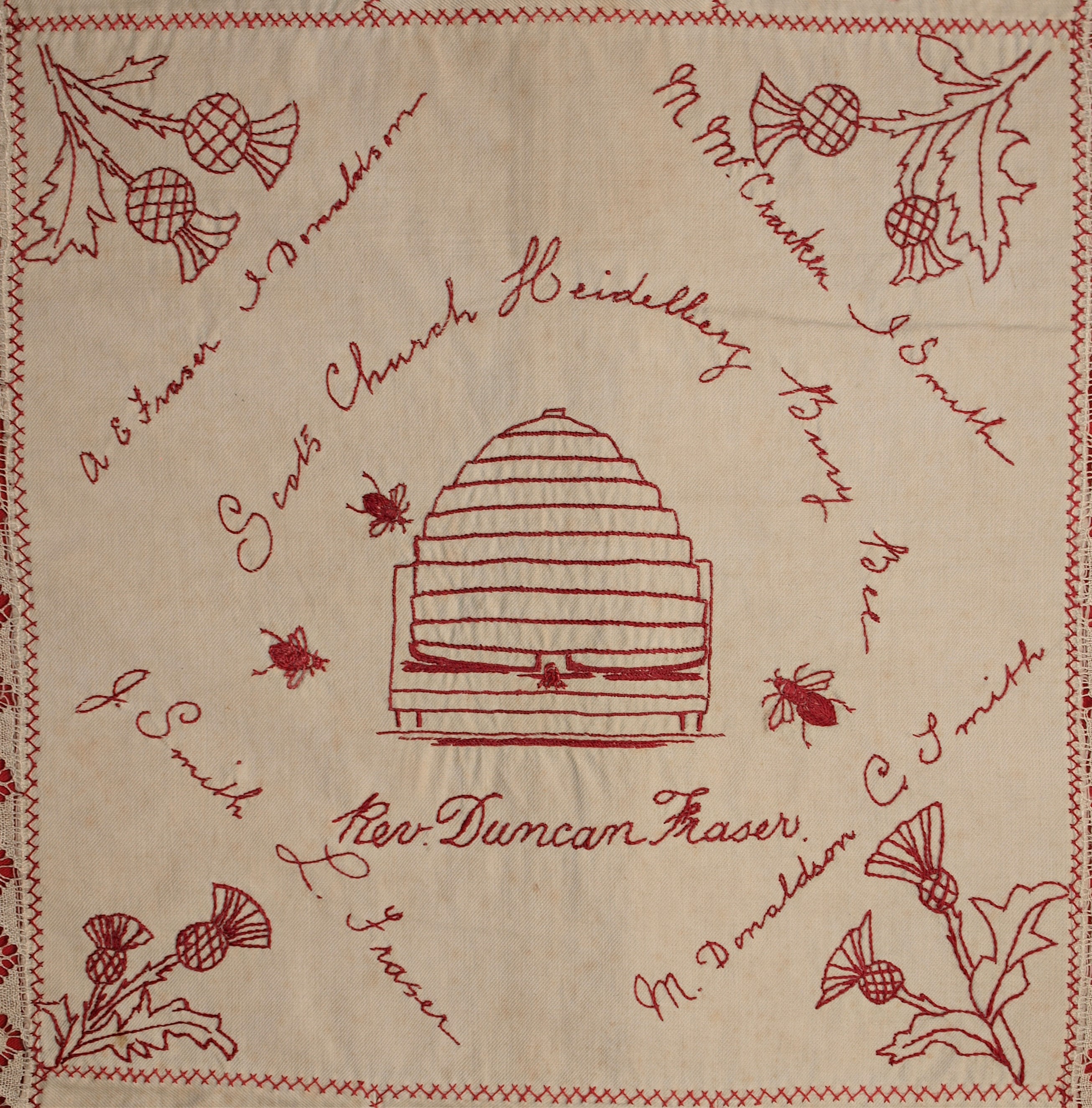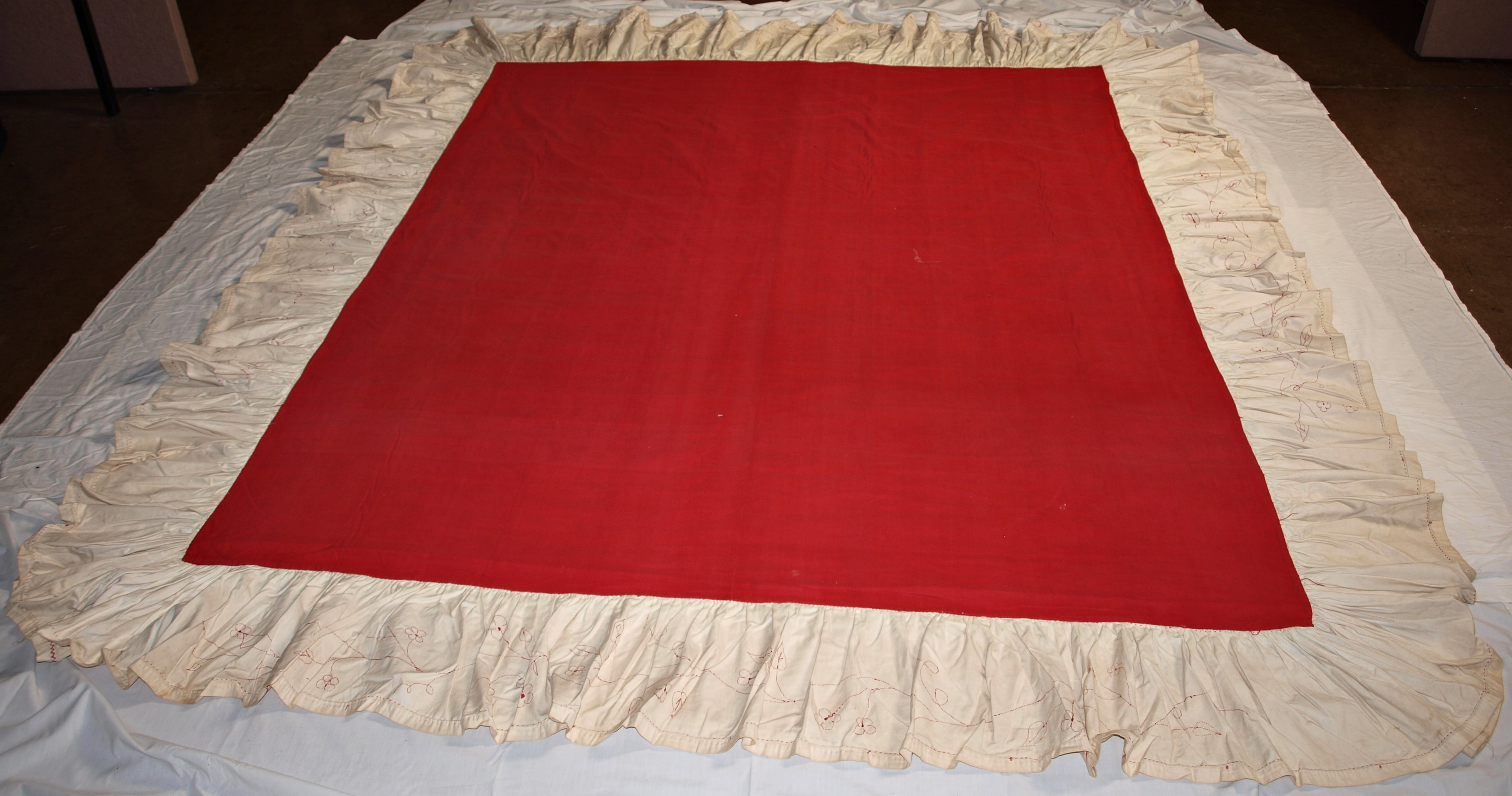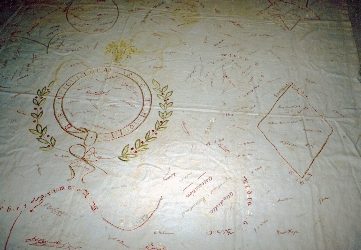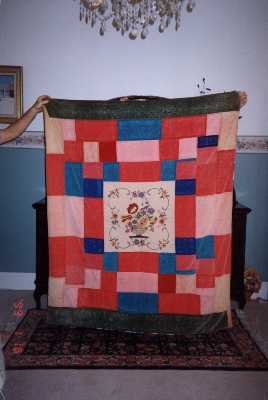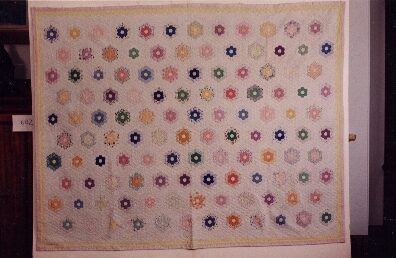-
Owner:
Heidelberg Historical Society Inc. -
Location:
Heidelberg, Victoria, Australia -
Maker:
Busy Bee society of the Scots Presbyterian Church, Heidelberg -
Pattern:
Signature -
Pattern:
Community -
Pattern:
Embroidered -
Pattern:
Motifs or Names -
Pattern:
Pieced -
Pattern:
Rectangle -
Dimensions:
Height: 247
Width: 213
History
In early 1895 a group of women in Heidelberg organised a Busy Bee society to raise funds for their Presbyterian church. Among other activities, they made a signature quilt. They invited individuals, families and businesses to pay four shillings per square and to contribute their details for inclusion by the embroiderers. Most provided their names or initials. Many provided the name of their house or suburb. Some added decorative elements. Some purchased more than one square. Some contributors may have embroidered their own squares.
If every square was sold, the Busy Bee quilt would have raised about £40 for the Heidelberg Scots Church.
At the beginning of their project in August 1895, the group announced that ‘an autograph quilt would be prepared and disposed of in accordance with the art union principle’. This principle was similar to a raffle: subscribers contributed funds to a creative project and thus became eligible to ‘win’ the finished item, perhaps via an auction or a lucky draw. Research to date has not revealed the precise mechanism of disposal following the quilt’s completion in February 1896, but it appears that the quilt was allocated to a member of the Donaldson family. The Donaldsons were notable members of the Scots Church congregation and several Donaldson names or initials appear on the quilt (including two members of the Busy Bee creative team).
The finished quilt has travelled long distances since it was completed. It was taken to Opotiki by a branch of the Donaldson family that migrated to New Zealand in the early twentieth century. Descendants of the family returned it to Australia in 1990 when they donated it to the Scots Church (now Heidelberg East Ivanhoe Uniting Church). In June 2018 the Church donated the quilt to the Heidelberg Historical Society.
The quilt records almost 140 legible personal names as well as dozens of initials, decorations and place-names. Research into the names and people behind the signatures is revealing the interconnected histories of many of the contributors and social networks that extended from the Heidelberg district (including Alphington, Diamond Creek, Fairfield, Greensborough, Ivanhoe, and Kangaroo Ground) to Bulleen and Templestowe, and further afield to Hawksburn, Prahran, Williamstown and elsewhere in Victoria.
Description
This redwork quilt is constructed from 213 white cotton squares and four distinctive sashings made from Torchon lace insertions. It is edged on all four sides with a substantial frill or flounce that is approximately 25 cm deep and is embroidered with a floral design.
The quilt has 13 small squares across the width and 17 small squares down the length. The finished side measurement of each small square is approximately 11 cm. The larger central square takes the place of a potential 9 small squares, so its sides are approximately 33 cm. The lace insertions are 3.3 cm in width.
Each square is hand-embroidered with unique content (e.g. names, initials and/or decorative elements) using stranded cotton. The stitches used, in descending order of frequency, are: Herringbone, Stem, French knot, Satin, Long and short fill-in stitches, Running and Chain. The many inscriptions have been transcribed and are accessible via the website of the Heidelberg Historical Society.
The main embroidery colour is Turkey Red. A lighter shade of red is used for the row of Herringbone stitches along the outer edge of the frill.
The quilt is machine-pieced. The white fabric is a strong cotton with a twill weave. The red backing cloth is a thinner, plain-weave cotton. Its colour matches the Turkey Red embroidery thread and is visible through the lace insertions.
There is no wadding within the quilt, and no sign of any quilting stitches or tie stitches. The only connection between the white upper and the red backing is the overstitching (around the perimeter of the red backing cloth) that joins the two layers.
2470 x 2130 mm
Acknowledgements
This information and the photographs have been supplied by the Heidelberg Historical Society Inc.
